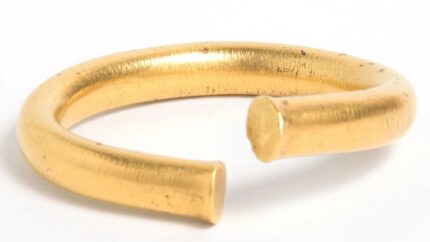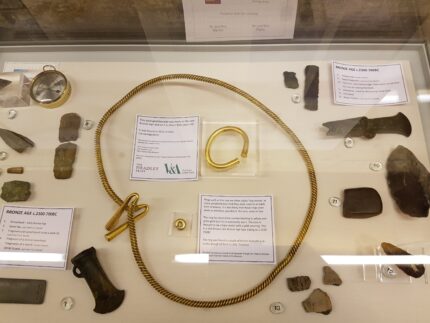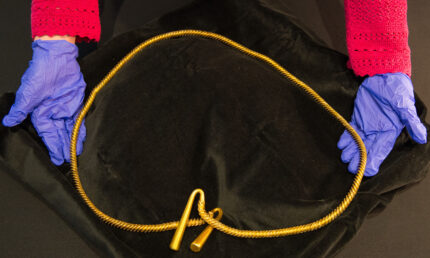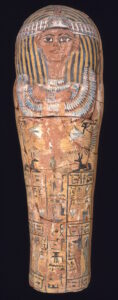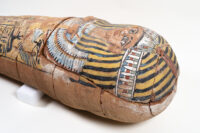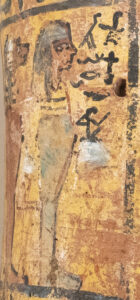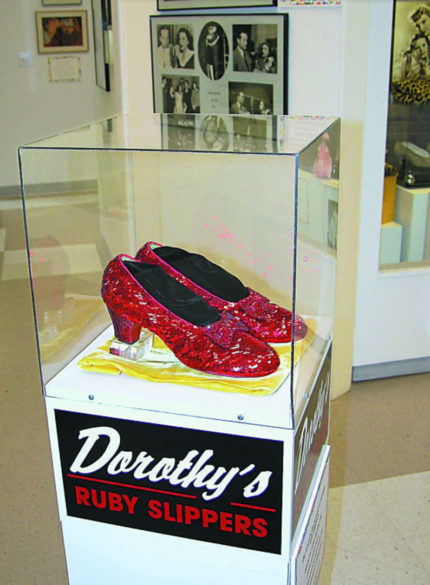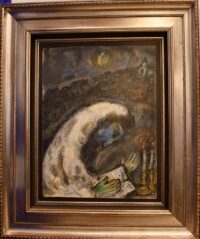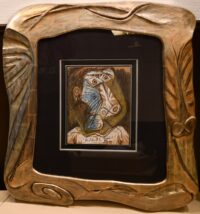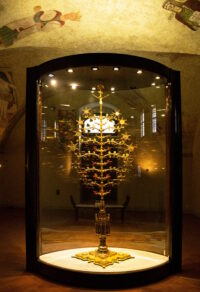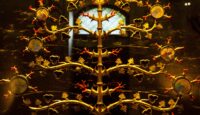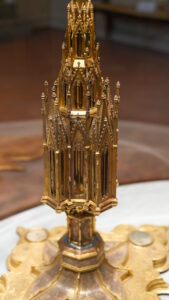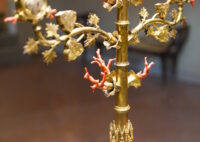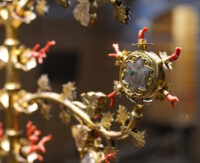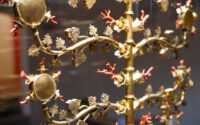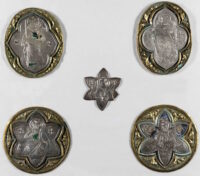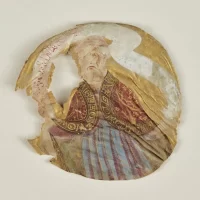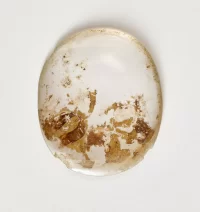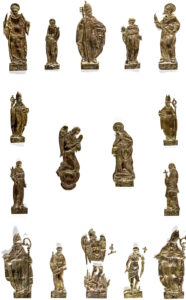One of the largest gold torcs ever discovered was stolen from the Ely Museum Tuesday. Thieves broke into the closed building in the wee hours on the morning of May 7th and stole the Bronze Age gold torc and a heavy gold bracelet from the same period. Only the two gold objects were taken.
Both of the stolen artifacts were found by metal detectorists in East Cambridgeshire. The solid gold bracelet was discovered in 2011. The torc was discovered in a recently ploughed field in September 2015. The four-flange spiral twisted bar torc is more than 4’10” long from trumpet terminal to trumpet terminal and weighs 732 grams (1.6 pounds). It dates to around 1300-1100 B.C. Not only is it exceptional for its size and weight, but also for its purity. Analysis found it is composed of 86-87% gold and 12-13% silver, which makes it 20-21 carat gold by today’s standards.
Dr Wilkin, who is responsible for the British Museum’s British and European Bronze Age Collection, described it as “one of the most important Bronze Age finds that’s ever been made in England”.
He said the torc is the “largest of its type in the whole of Europe” and its diameter is “larger than any adult male trousers that you can buy in a shop today”.
He speculated the torc could have been worn over bulky clothing or by a sacrificial animal but its use “remains a guessing game”.
At this time in the Bronze Age, people were no longer being buried with important objects – instead they deposited them at “important places in the landscape”.
Dr Wilkin said: “We don’t necessarily know why, but we think it was a gift to the gods, designed to secure good harvests or a healthy family. I’ve calculated you could probably make 10 smaller objects out of this one, so it’s a really big sacrifice of wealth and status.”
The Ely Museum acquired the torc in September 2017. After it was determined to be treasure at a coroner’s inquest, the British Museum’s valuation committee assessed its fair market value at £220,000 ($275,000). Local museums are given first crack at raising the sum, and the Ely Museum secured grants, including a large one of £138,600 from the National Heritage Memorial Fund, and donations from the public to reach the goal. A month later, the torc was on display at the Ely Museum, the pride and joy of its permanent collection.
Elie Hughes, curator at Ely Museum, said: “We are devastated by the loss to the museum and to the local heritage of the region. It is a huge blow after the incredible support from the community in acquiring the torc in 2017. As a culturally significant object, it cannot be replaced. Our priority now is working with the police to locate the stolen objects.”
The museum is housed in Ely’s Old Gaol building since 1997. The 700-year-old building was extensively redeveloped to improve access, display space and security in 2021, so it’s not like its systems are old junk. The break-in was just swift and targeted. The worst part of this is that the torc is obviously completely unsalable. It is far too famous and unique to be passed off on the sly, and the odds of this being a commissioned theft for an unscrupulous private collector are miniscule. The real danger is that the priceless archaeological artifacts will be melted down for their mere gold value.
The Cambridgeshire Constabulary are investigating the crime. They are currently looking for two people seen on e-scooters in the vicinity of the museum between midnight and 2:00 AM Tuesday. Anybody with information can contact the police by dialing 101 in the UK or through its online chat service.
